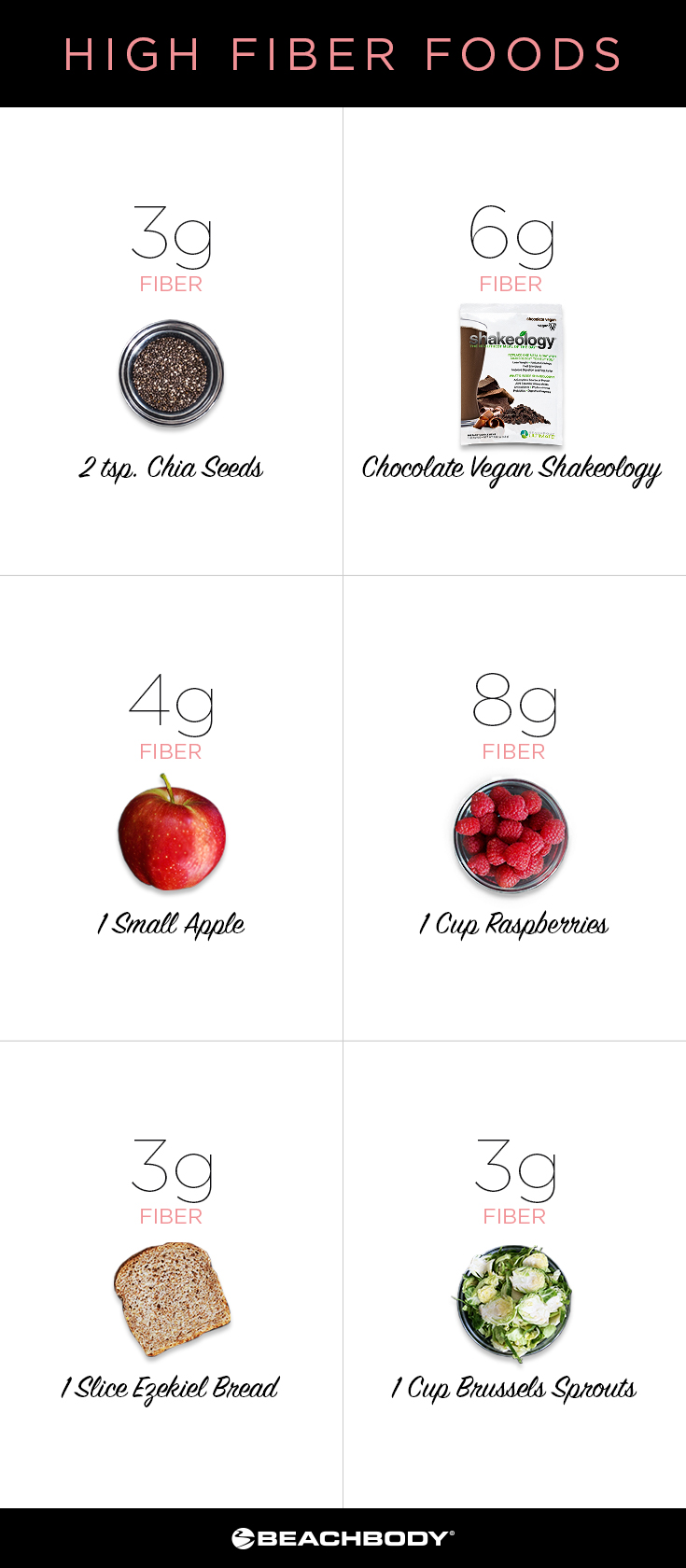13 High-Fiber Foods That Can Help You Lose Weight
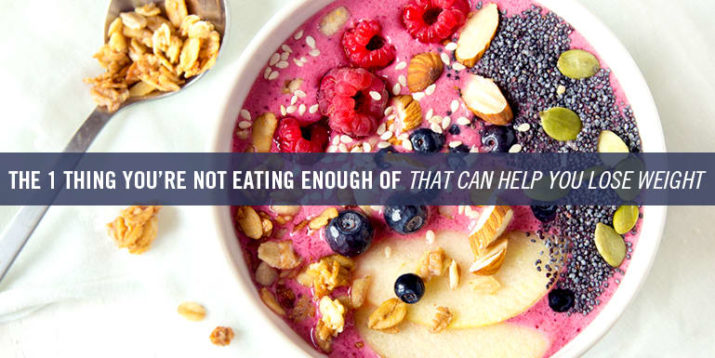
There’s no one-size-fits-all weight loss strategy that works for everyone. But when it comes to healthy eating, research suggests high-fiber foods can help with weight loss as well as support overall health.
“Dietary fiber plays many important roles in the scope of overall health such as promoting healthy gut bacteria balance and elimination of waste,” says Jamie Mok, M.S., R.D., RYT, a Santa Monica, California-based dietitian nutritionist.
“Dietary fiber also slows digestion, which promotes satiety after eating, and helps support healthy blood sugar and cholesterol levels.”
Unfortunately, most of us aren’t getting enough of it. In fact, 90 percent of women and 97 percent of men fall short of USDA daily recommendations for fiber intake.
So, to bolster your intake, here are 13 high-fiber foods that may help you reach your weight loss and health goals. Just two important notes:
- If you’re hoping that eating more fiber will help you lose weight, you’ll want to eat these high-fiber foods instead of foods with little-to-no fiber — not in addition to them — so you’re not tacking on extra calories.
- When increasing your fiber intake, it’s important to consume more water at the same time. “Fiber requires water for healthy elimination. If you’re eating a high-fiber diet but don’t consume enough fluids, it can cause constipation,” Mok says.
1. High-Fiber Bran Cereal
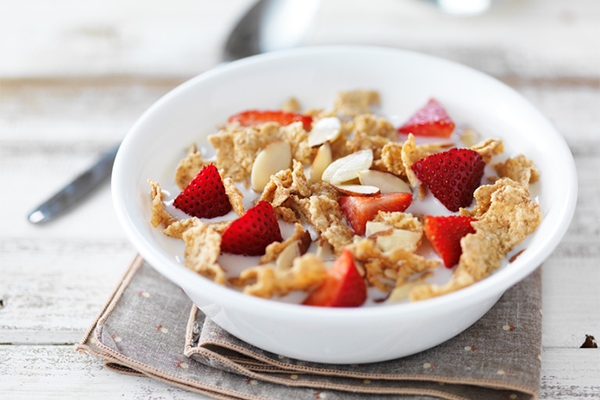
Serving size: 1/2 cup
Fiber per serving: 14 grams
Calories: 62
Think outside the cereal bowl: Sprinkle bran cereal over low-fat (2%) Greek yogurt and top with fresh berries for a nutrient-dense way to start your day.
Standard wheat-bran flakes have less fiber per serving, so be sure to choose high-fiber varieties.
And keep in mind cereal is a processed food, so look for short, clean-ingredient lists. Sprouted grains (like Ezekiel’s sprouted grain version) are a bonus.
2. Chia Seeds
Serving size: 1 ounce (2 Tbsp.)
Fiber per serving: 9.8 grams fiber
Calories: 138
This superfood has garnered a lot of attention for the past few years — and for good reason.
Chia seeds contain all nine essential amino acids (including ones we can’t produce on our own) plus calcium, potassium, and phosphorous.
Add them to smoothies, salads, yogurt, or oatmeal.
3. Navy Beans
Serving size: 1/2 cup, cooked
Fiber per serving: 9.6 grams
Calories: 127
Beans give you a big fiber bang for your calorie buck, along with some protein and complex carbs.
Navy beans have the slight edge when it comes to fiber, but small white beans (9.3 grams) and yellow beans (9.2 grams) are close runners-up.
Add any or all of these beans to a vegan chili recipe.
4. French Green Beans
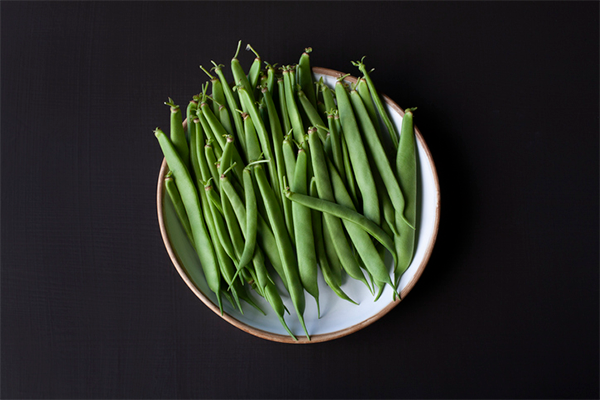
Serving size: 1/2 cup, cooked
Fiber per serving: 8.3 grams
Calories: 114
French green beans, a.k.a. haricot vert, are smaller and a bit more delicate in flavor than regular green beans.
Serve them steamed and seasoned with lemon zest, lemon juice, and a sprinkle of sea salt; or stir-fry them with ginger, garlic, and honey for a sweet-and-salty side dish.
5. Raspberries
Serving size: 1 cup
Fiber per serving: 8 grams
Calories: 64
Here’s a sweet and juicy way to help you to meet your fiber goal: Snack on raw raspberries, blend them into a smoothie, or add them to homemade ice cream. The tiny seeds might be annoying when they get stuck in your teeth, but that’s where the bulk of the fiber comes from in this fruit.
6. Lentils
Serving size: 1/2 cup, cooked
Fiber per serving: 7.8 grams
Calories: 115
Lentils have plenty of fiber and around 8 grams of protein per serving. They’re also relatively easy to cook and can be added to soups or salads.
Try tasty, punchy flavor combinations like a cilantro and lime lentil salad or a jalapeño ranch rainbow bowl.
7. Chickpeas

Serving size: 1/2 cup
Fiber per serving: 6.3 grams
Calories: 135
These beige beans can add fiber to your diet and satisfy your snack cravings.
Craving something salty and crunchy? Pop some crispy roasted chickpeas in your mouth instead of reaching for potato chips.
In the mood for a creamy dip? Nosh on crudités dunked in homemade hummus.
(Try avocado hummus or black bean hummus when you want a slight break from tradition).
8. Blackberries
Serving size: 1 cup
Fiber per serving: 7.6 grams
Calories: 62
Not only are blackberries a great high fiber food, but they’re also a relatively low0sugar fruit that provides important nutrients like potassium, vitamin A, and vitamin C.
Add blackberries to a smoothie or yogurt, use them to garnish a healthy dessert, or snack on them by the handful.
For a savory option, try blackberry spinach salad.
9. Black Beans
Serving size: 1/2 cup, cooked
Fiber per serving: 7.5 grams
Calories: 114
Black beans are one of the best vegan sources of protein — and you can use these versatile legumes to add extra fiber to so many different recipes.
Create a burrito bowl with black beans and shredded chicken breast, dump them into a Southwestern salad, or make a batch of black bean chili.
10. Bulgur
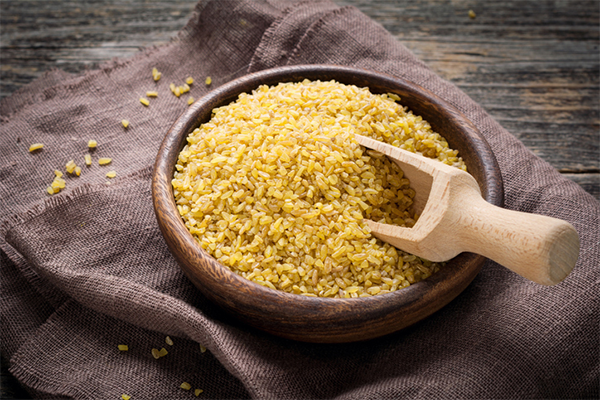
Serving size: 1 cup
Fiber per serving: 8.2 grams
Calories: 151
If you haven’t used bulgur in recipes before, try it — this nutritious whole grain just might become your new favorite ingredient.
Its texture is similar to couscous, and it cooks just as quickly.
Add a cup of bulgur to roasted or grilled veggies, and drizzle with a teaspoon of olive oil and a bit of lemon or lime juice for a tasty brown-bag lunch.
11. Artichokes, cooked
Serving size: 1 cup, cooked
Fiber per serving: 9.6 grams
Calories: 89
A medium artichoke makes a simple and delicious side dish. This high fiber food is often served with melted butter, but for a healthier version, dip it in balsamic vinegar (or Greek yogurt mixed with lemon juice and garlic) instead. You can also use frozen or canned artichokes to add sunny flavor to a breakfast pizza or a chicken piccata.
12. Flax Seeds
Serving size: 2 Tbsp.
Fiber per serving: 5.6 grams
Calories: 110
Flax seeds add a complex, nutty flavor to foods, and they’re a simple way to sneak more fiber into any dish — along with some healthy omega-3 fatty acids.
Blend two tablespoons into a superfood smoothie, or add flax seeds to your flour mixture when baking for a boost of fiber.
You can even use flax meal as a breading to make healthier versions of your favorite fried foods.
13. Shakeology
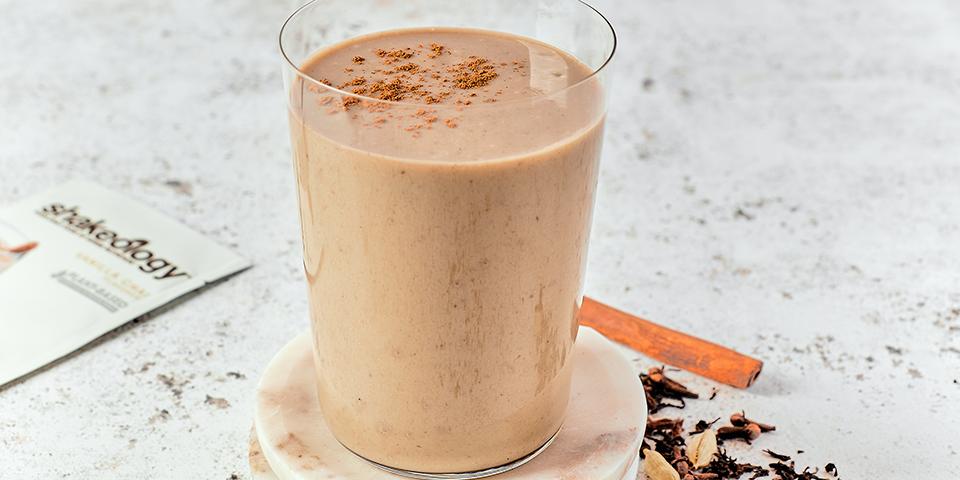
Serving size: 1 scoop
Fiber per serving: at least 6 grams
Calories: 140 to 160 calories
We would be remiss to leave Shakeology off this list.
For 140 to 160 calories per scoop (depending on the flavor) you’ll get at least 6 grams of fiber, plus several flavors to choose from. And each scoop contains at least 16 grams of protein!
To keep things quick and easy, combine it with some water and shake it up. Or, try it in any one of these delicious recipes!
Need more inspiration? Here are some other good sources of fiber.
Fruits
- Pears: 5.5 g per 1 medium pear
- Avocado: 4.9 g per ½ cup sliced avocado
- Apples: 4.4 g per 1 medium apple with skin
- Oranges: 3.6 g per 1 medium orange
- Pomegranate seeds: 3.5 g per ½ cup
- Bananas: 3 g per 1 medium banana
Vegetables
- Parsnips: 6.5 g per 1 cup cooked pieces
- Broccoli: 1.8 g per 1 cup, chopped, raw
- Brussels sprouts: 4 g per 1 cup cooked
- Sweet potato: 3.8 g per 1 medium cooked sweet potato
- Carrots: 3.6 g per 1 cup, chopped, raw
Legumes
- Lentils: 7.5 g per ½ cup, cooked
- Kidney beans: 6.4 g per ½ cup, cooked
- Pinto beans: 7.7 g per ½ cup, cooked
- Split peas: 8 g per ½ cup, cooked,
Grains
- Whole-grain pasta: 6 g per 2⁄3 cup, cooked
- Oats: 4 g per 1 cup, cooked
- Quinoa: 3.5 g per 2⁄3 cup, cooked
- Barley: 3 g per ½ cup, cooked
Nuts and Seeds
- Almonds: 4 g per 3 Tbsp.
- Pumpkin seeds: 3 g per ¼ cup
And as important as a list of high-fiber foods may be, a list of foods low in fiber is also handy. These include, but are not limited to:
- Meat (beef, chicken, pork, etc)
- Fish (all fish and seafood)
- Dairy (yogurt, milk, cheese)
- Eggs (all kinds)
- Processed grains (white bread, white rice, etc.)
Why Is Fiber Important?
Eating enough fiber is crucial for your body’s digestion, appetite, and overall health. Check out these four incredible health benefits of fiber:
1. Digestion
Fiber is what makes up the ‘bulk’ in our stool, and it’s also what helps us to go regularly, without too much strain or pain. It also supports healthy digestive function and overall gut health by providing the prebiotics that feed probiotics in the intestine.
2. Heart health
Fiber can support heart health by helping maintain healthy cholesterol levels within normal ranges. Research suggests soluble fiber in particular may help improve cardiovascular health by positively impacting cholesterol.
3. Healthy blood sugar
Research suggests fiber may also help support healthy blood sugar levels. Soluble fiber helps slow down your body’s rate of sugar absorption, which can help to prevent blood sugar spikes and subsequent swings in appetite.
4. Weight management
Consuming foods high in fiber promotes satiety, which can help you feel fuller while eating fewer calories.
“Foods that are naturally higher in fiber, such as vegetables, tend to be lower in calories but high in volume, helping to keep you satiated,” explains Amy Gorin, M.S., R.D.N., and owner of Amy Gorin Nutrition in the New York City area.
A good example is raw spinach, which has just 14 calories and 1.3 grams of fiber per two cups.
Blending a couple of handfuls of raw spinach into a smoothie adds bulk, so you can satisfy your hunger without racking up calories.
We know a high-fiber diet may not be the sexiest diet plan out there. But if you’re looking for a simpler way to slim down and improve your health, eating more fiber may help.
How Much Fiber Should You Eat?
According to the current Dietary Guidelines for Americans, women between the ages of ages 19 and 50 should aim for 25 to 28 grams of fiber daily.
Men between the ages of 19 and 50 should consume between 31 and 34 grams each day.
You’ll know if you’re eating fiber if you have regular bowel movements. If your poops are painful, more than two to three days apart, and/or small and dry, then you’re probably not consuming enough fiber.
“I encourage my clients to consume fiber by choosing whole grains, including a couple of servings of fruit and veggies with every meal, and incorporating more beans, peas, lentils, nuts, and seeds into their daily diet, ” Mok says.
If you want to make extra sure you hit your fiber goal, Shakeology may help keep you regular while supporting your digestive health.
With 16 to 17 grams of protein per serving (depending on the flavor) Shakeology comes in at roughly the same protein level as a serving of Greek yogurt or tofu. And it surpasses eggs, which check in at 12 grams for two.
While it’s not as high in protein as meat or fish, it still has enough for it to count as a red container in the Portion Fix Container system.
If you want to make extra sure you hit your fiber target, a supplement like Digestive Health can also help. This fiber supplement is an excellent source of dietary fiber that’s designed to help keep you regular while supporting your digestive health.*
You can get 40 percent of your daily recommended amount of fiber when you add this boost to your daily Shakeology.
Of course, always consult your physician before using any new supplement.
*These statements have not been evaluated by the Food and Drug Administration. This product is not intended to diagnose, treat, cure or prevent any disease.
